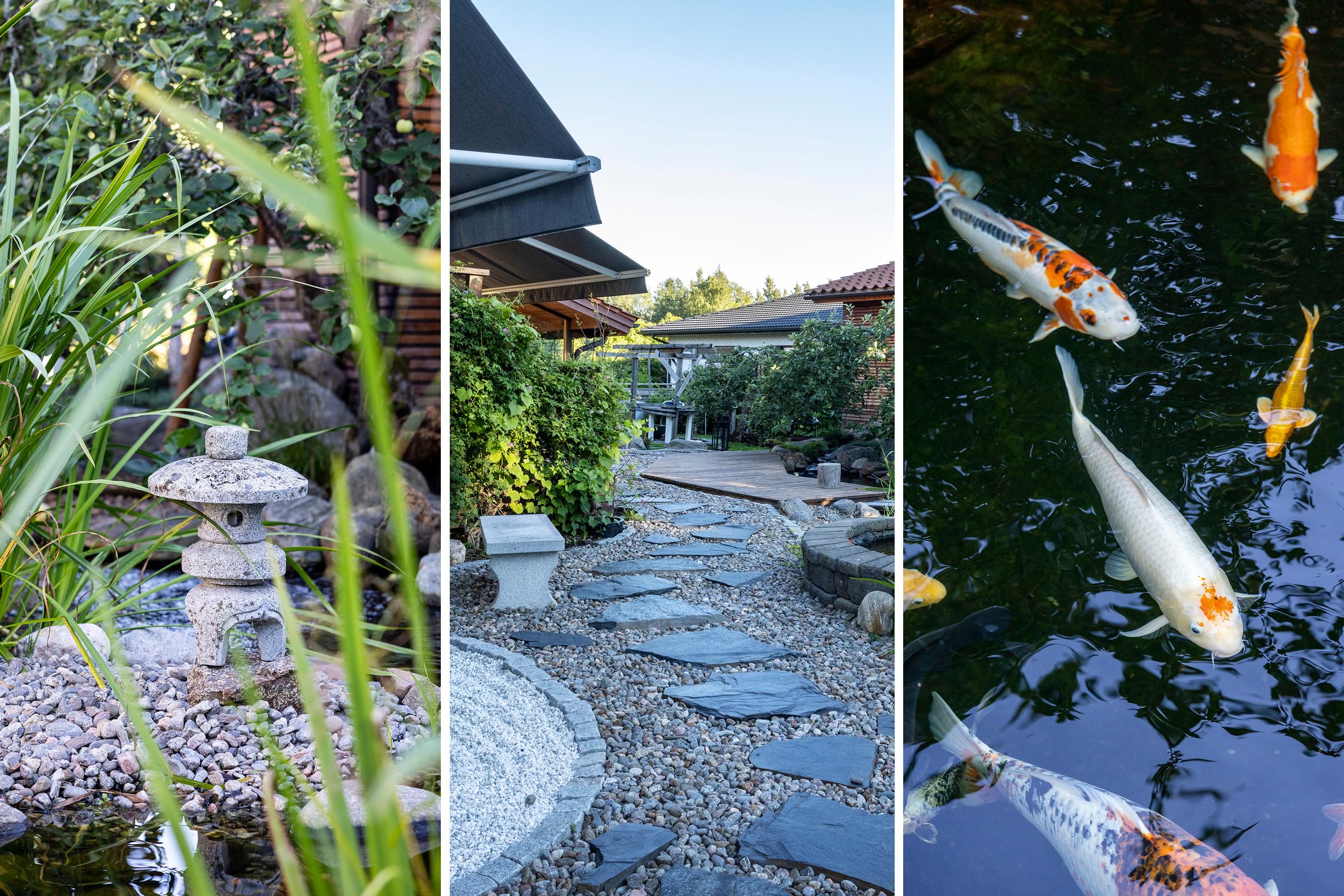
Japanese-style garden with 40 carp: “It took a couple of years to persuade my wife”
Eija wanted a backyard badminton court, while Mika dreamed of a Japanese-style garden. Today, they both enjoy a meticulously realized, Japanese-inspired backyard oasis, centered on a carp pond surrounded by natural stones and iris.
A few steps along the wooden deck, and the carp soon swim sociably close to the edge. These large fish, ranging in color from orange and reddish to paler shades of gray, are fascinating to watch. They have grown accustomed to the footsteps of the homeowners, Mika and Eija Nieminen.
“The carp rise to the surface and come to the pond’s edge when they hear movement,” Mika says.
Much has happened since Mika and Eija were first considering how to design their yard. The family moved in 2011 to a relatively new house with an 800-square-meter (8,600 sq ft) yard, which had a lawn, a lilac, and a couple of apple trees. Eija wanted a trampoline and a badminton court for the children, while Mika pictured a carp pond and a serene, Japanese-inspired garden.
“Eija is practical, and it took a couple of years to persuade her before we started realizing my vision. Japanese gardens have always fascinated me. I’ve never been to Japan, but I have a soft spot for samurai adventures and Japanese aesthetics.”
Mika immersed himself in studying Japanese gardens, reading both online resources and books. The biggest help in planning and building the garden came from Yoko Kawaguchi’s Serene Gardens. The Japanese approach to stone usage and its significance especially became clear to Mika after reading this book.
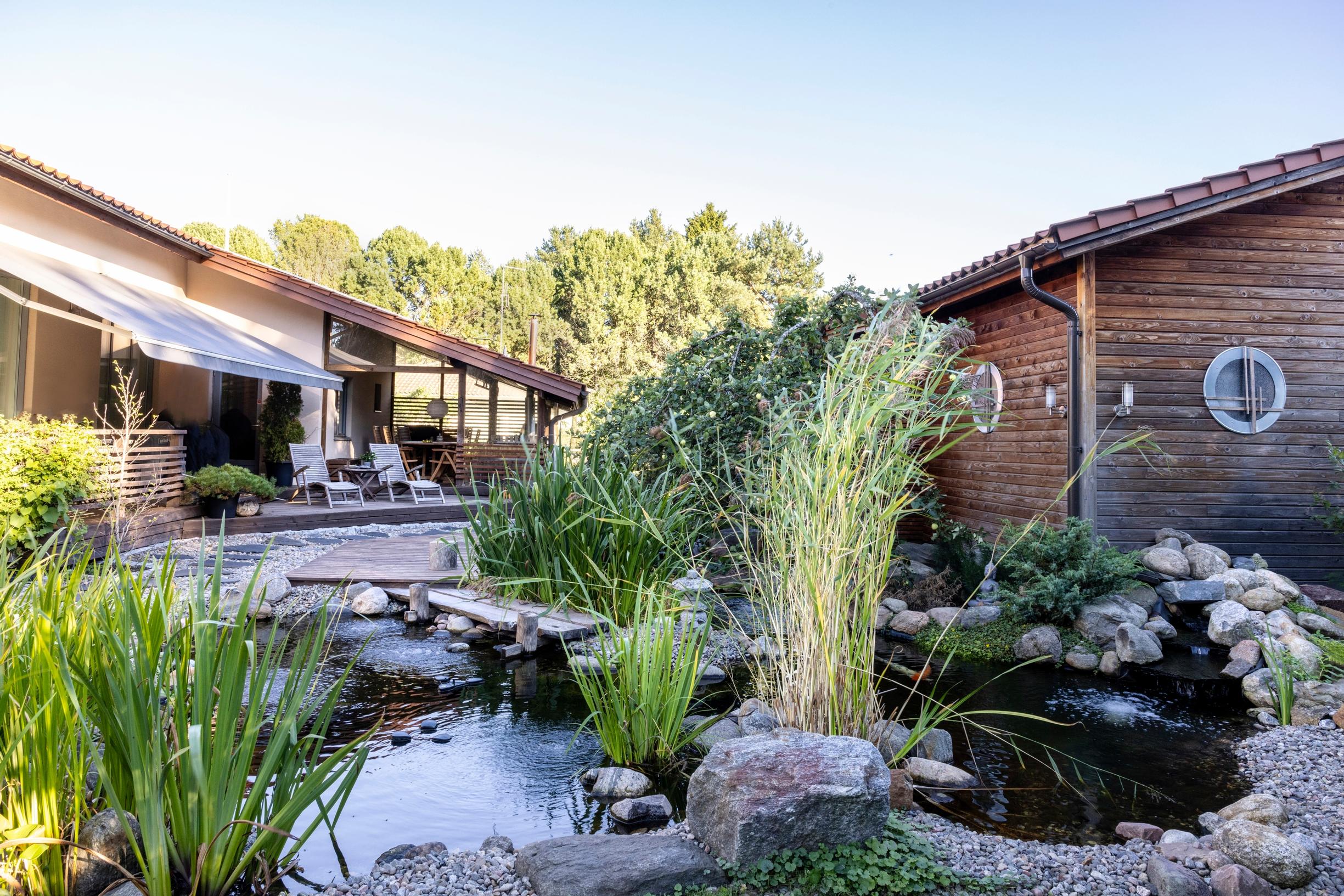
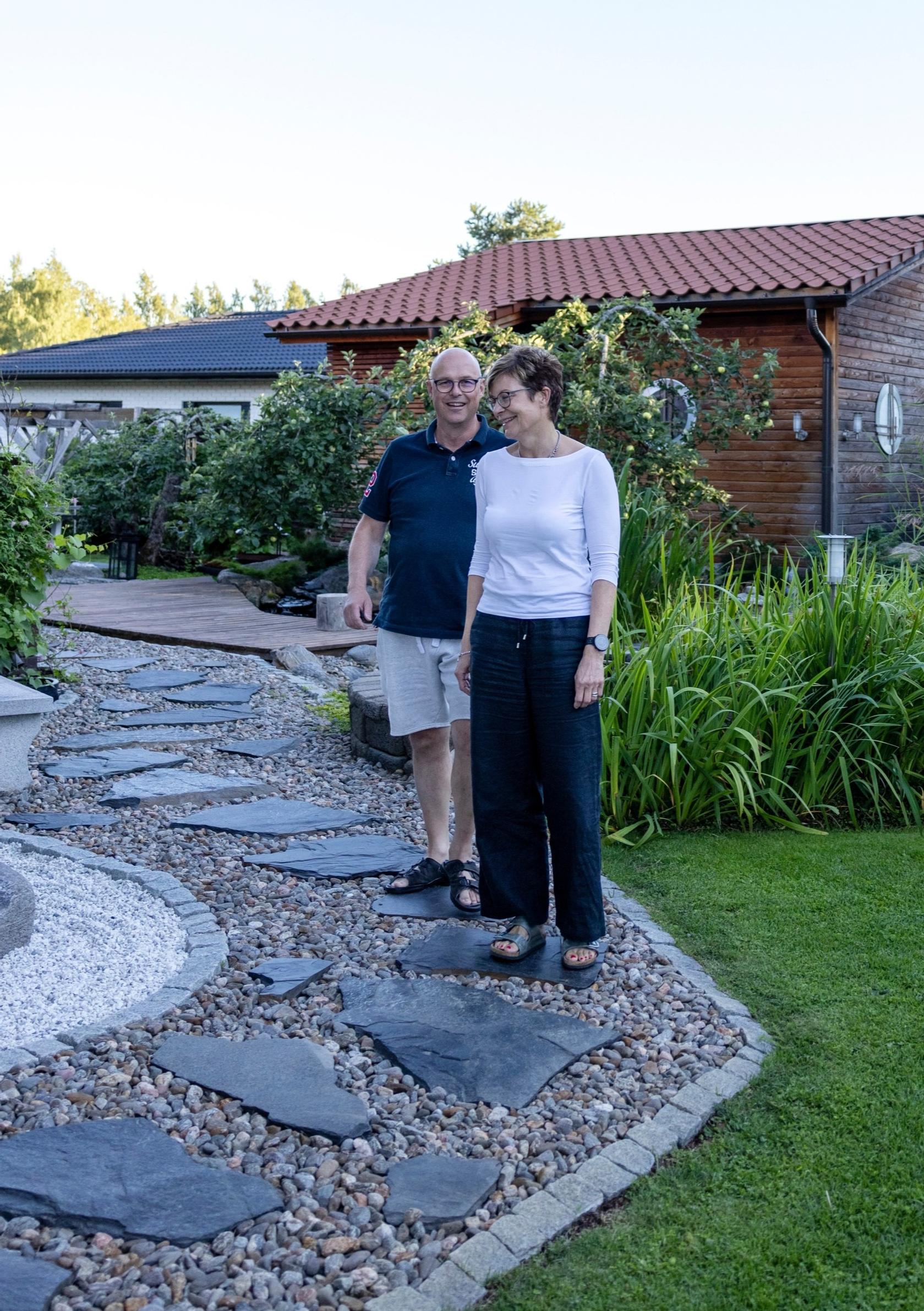
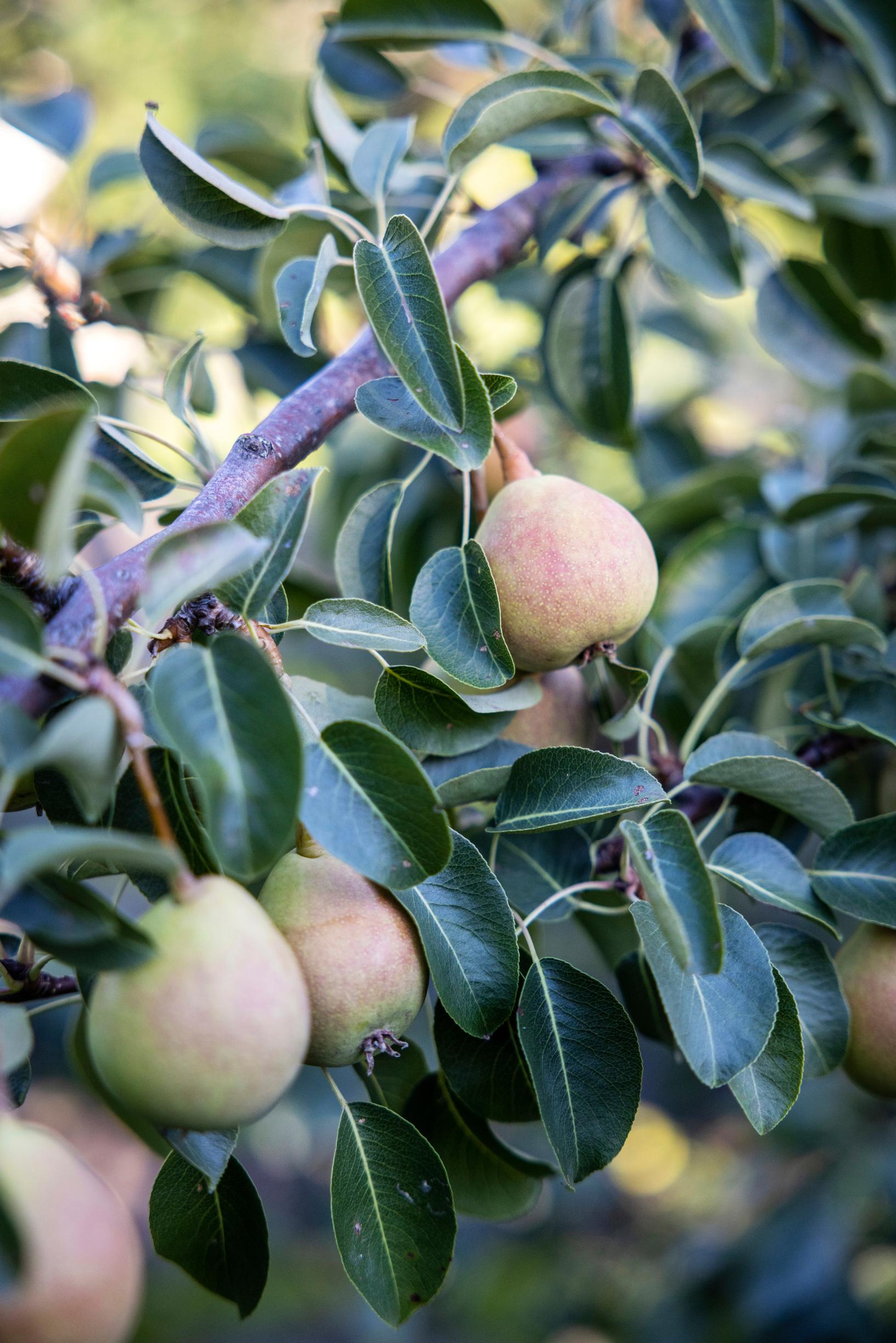
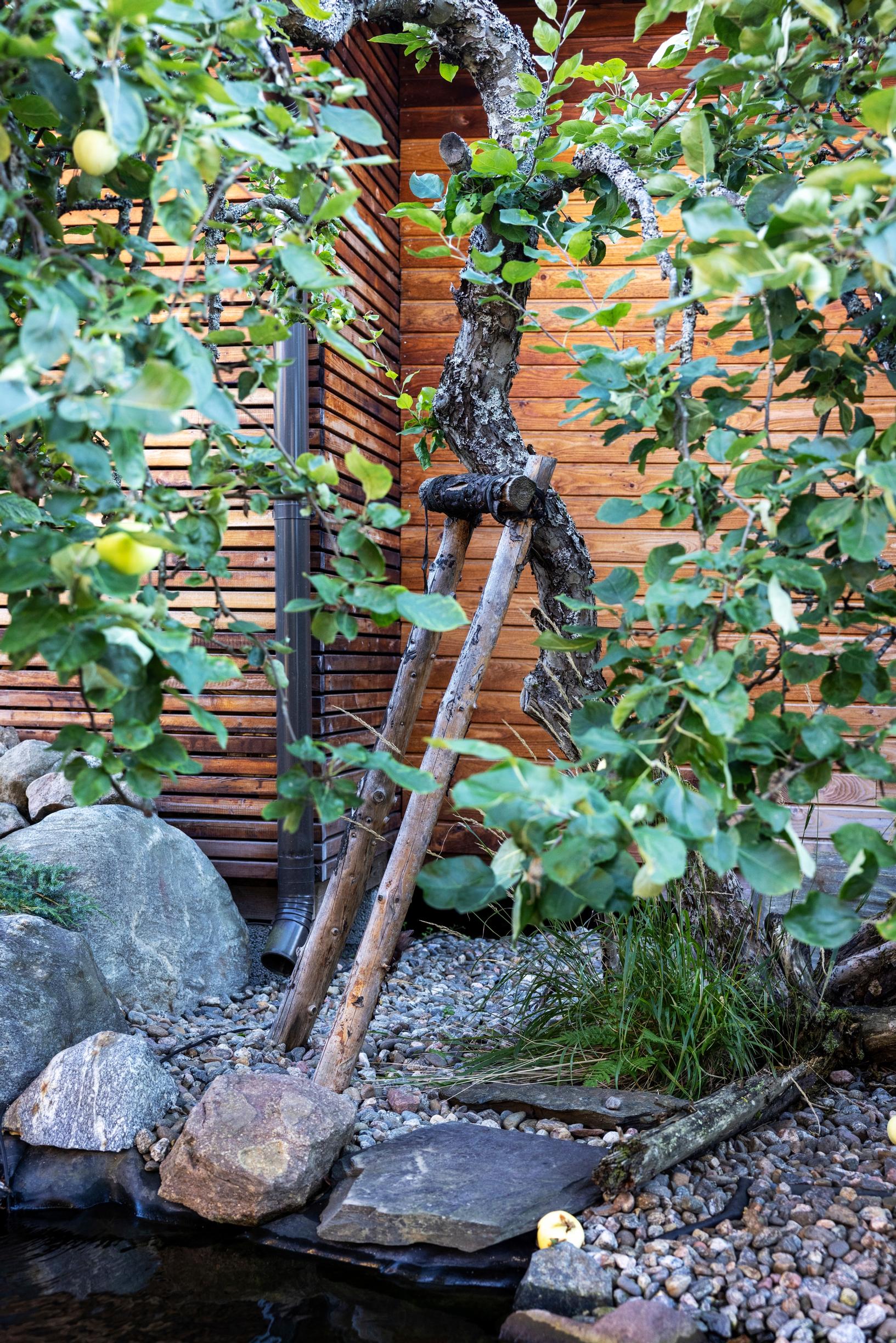
The first pond was completed in 2014. It was fine for goldfish, but proved too small for koi. A few years later, an excavator reshaped the yard again, digging a pond twice as large beside the terrace—with a capacity of 10 cubic meters (2,600 gallons). Mika lined it with pond rubber and landscaped it with stones and plants.
“We brought in two truckloads of stones. Mika had quite a job dealing with them,” Eija says.
Carefully planned and constructed, the garden offers beautiful, tranquil views that can slow your heartbeat. Near the pond, Mika planted common reed and, by the water’s edge, wood club-rush, yellow iris, and other ornamental species suited to a Japanese-style water feature. In the pond, he chose aquatic plants like water hawthorn, but he notes that the plant-eating carp have limited their growth.
Elsewhere, Mika focused mostly on foliage plants like hosta. Conifers and Japanese spirea keep maintenance simple. A calming, green color palette dominates, while varied leaf textures and growth habits provide contrast.
“In spring, our garden comes alive with chocolate cherry and pear and apple trees. Hydrangeas and rhododendrons form a protective border, and their muted blooms complement the Japanese-style setting.”
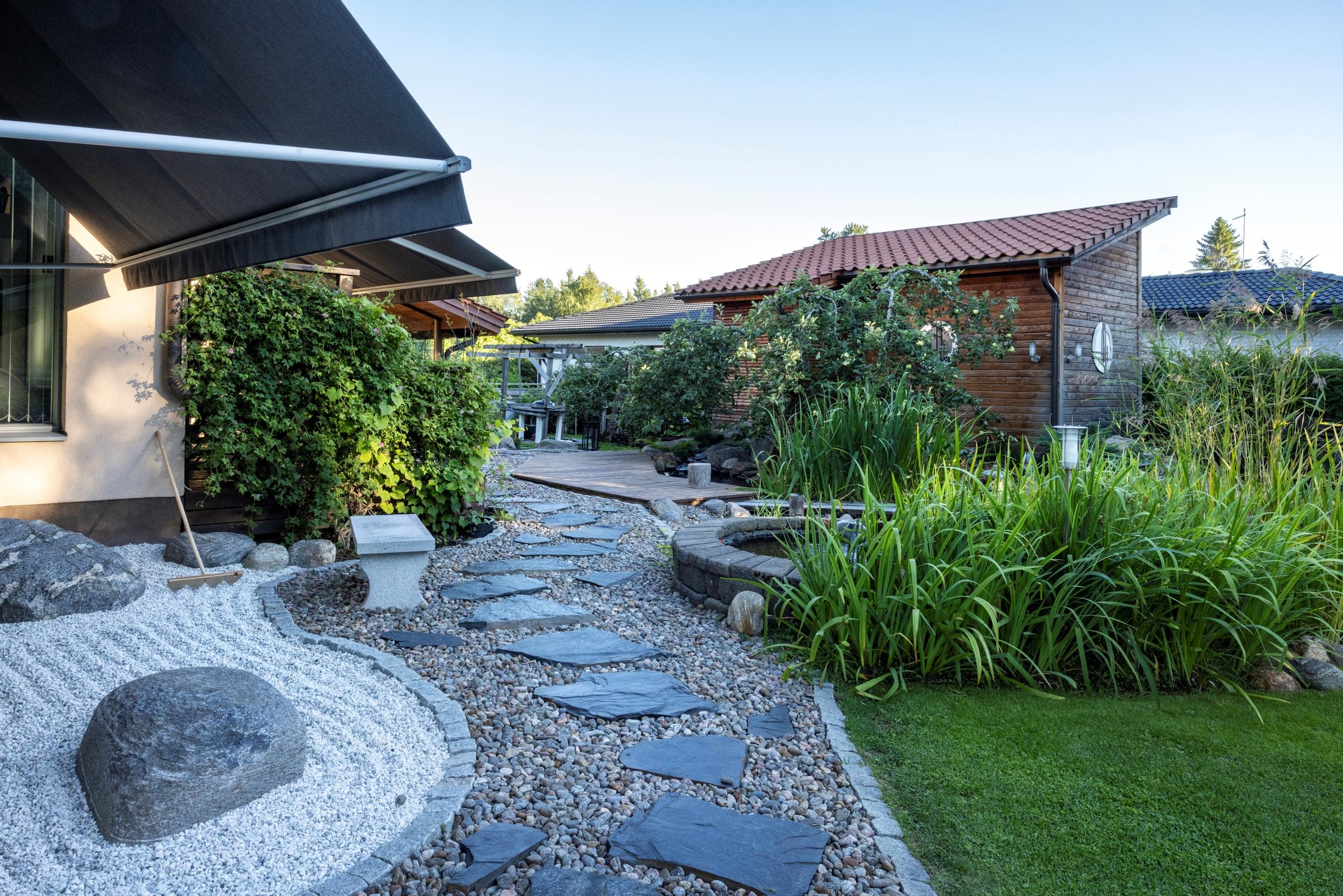

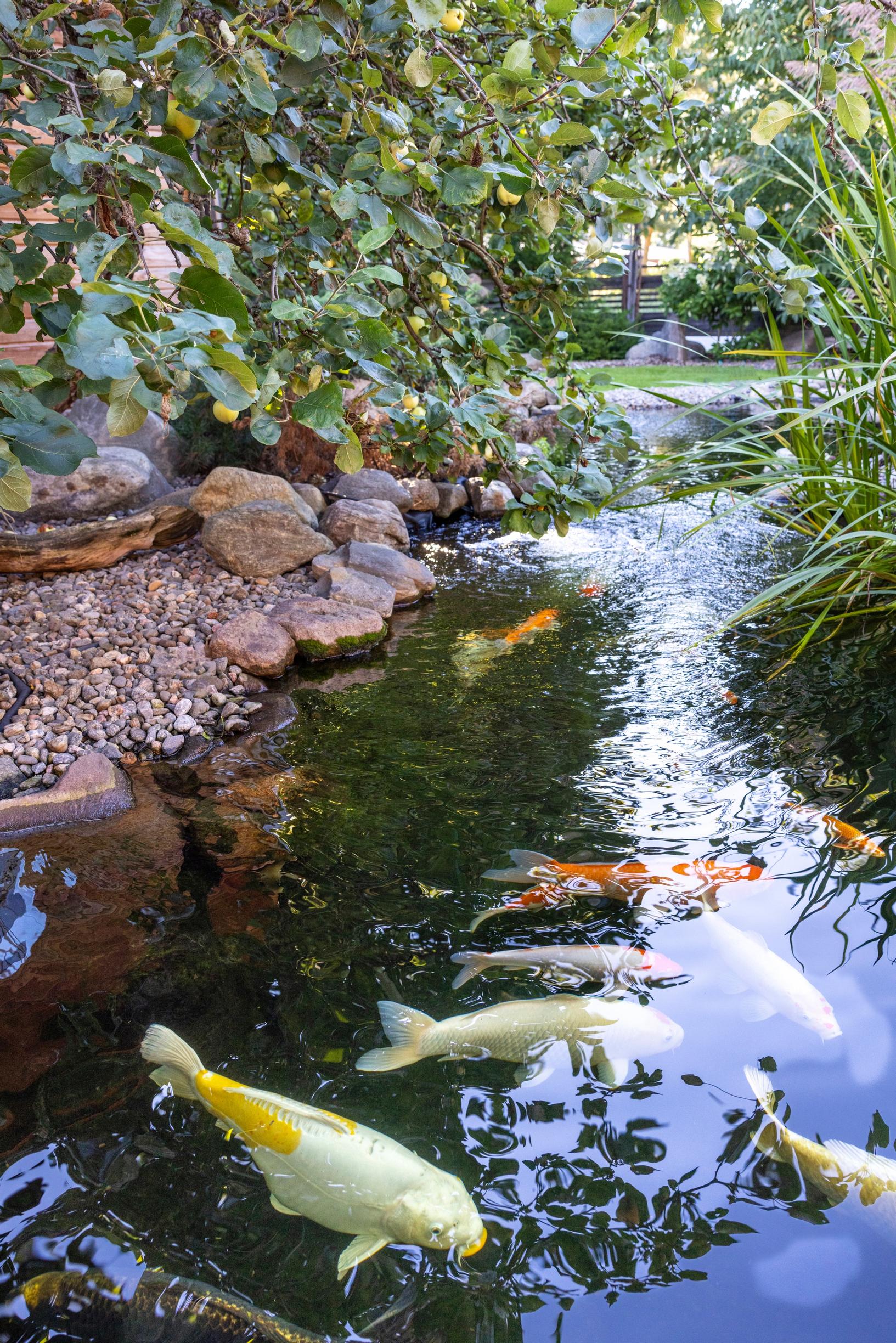
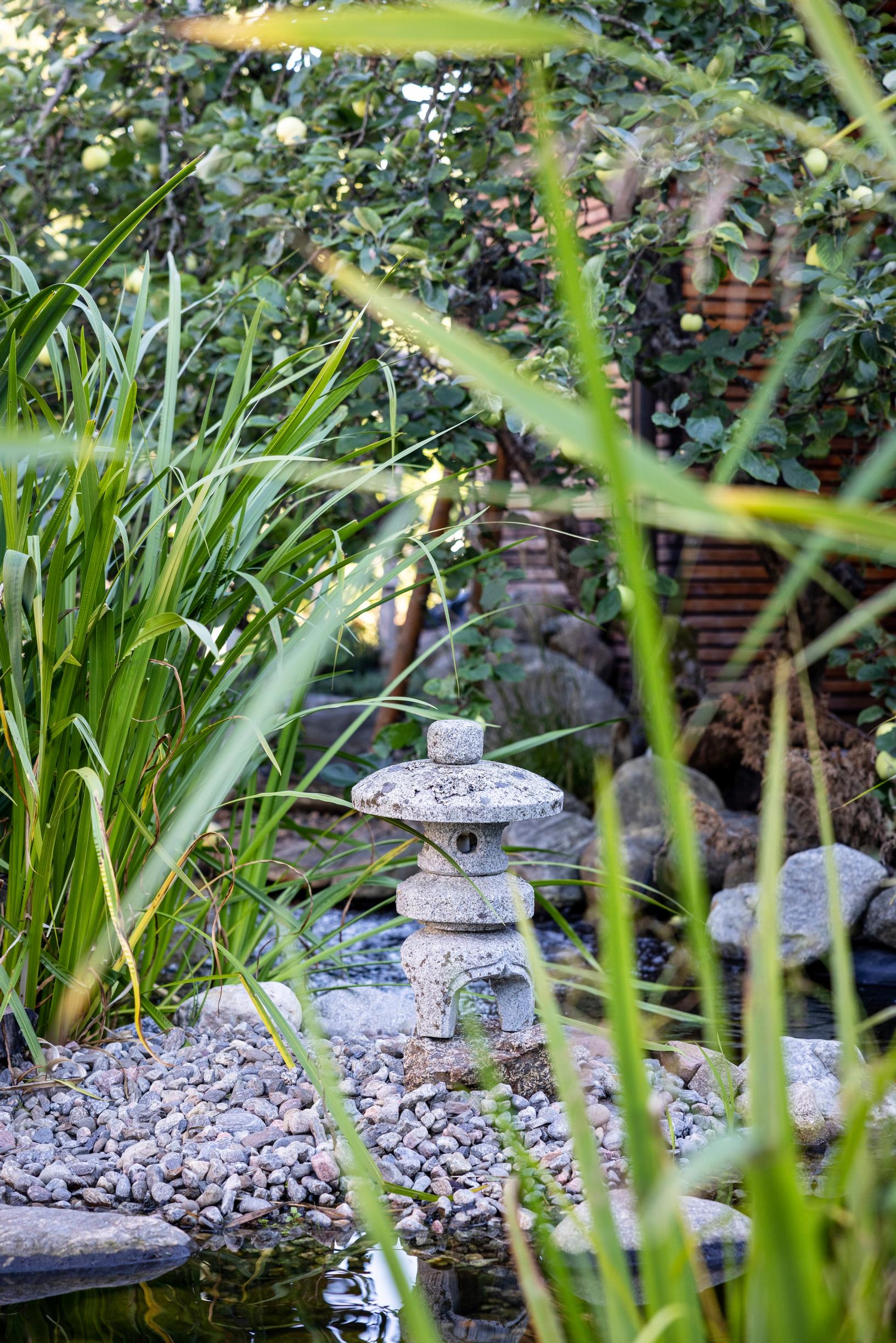
Stones also play a key role in Mika and Eija’s garden. True to Japanese garden aesthetics, they symbolize permanence and strength. Natural boulders, flagstones, and smooth gravel create surfaces, paths, and sculptural stone groupings. Mika placed stepping stones in a gentle arc, so that walking on them naturally slows one’s pace.
“It’s important to pause and observe in the garden,” he says.
Stone areas are durable and low maintenance, providing a nice contrast to lush greenery. Moss is free to settle on and between the stones if it takes hold.
“A gardener shouldn’t be too industrious if they want the garden to be beautiful.”
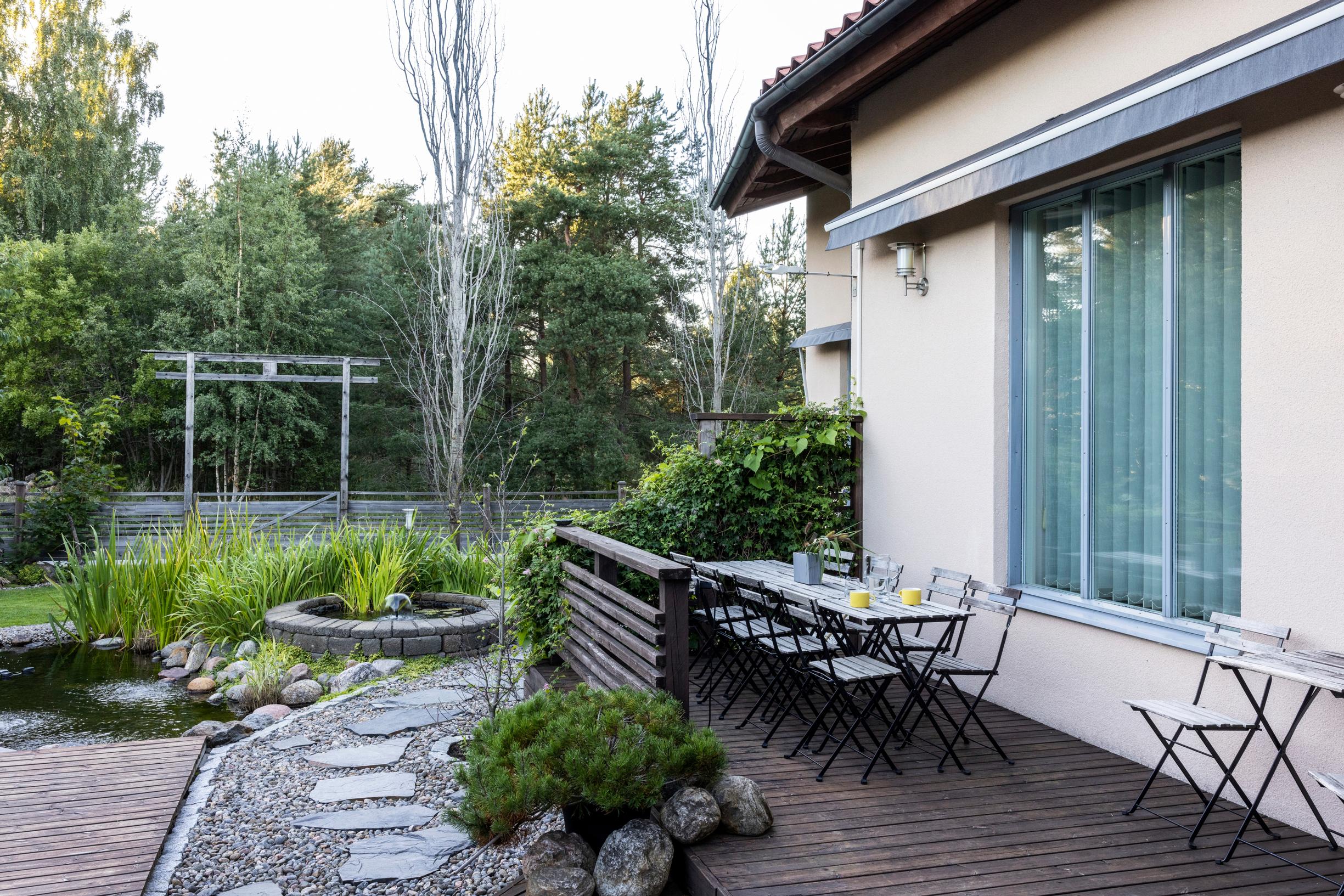
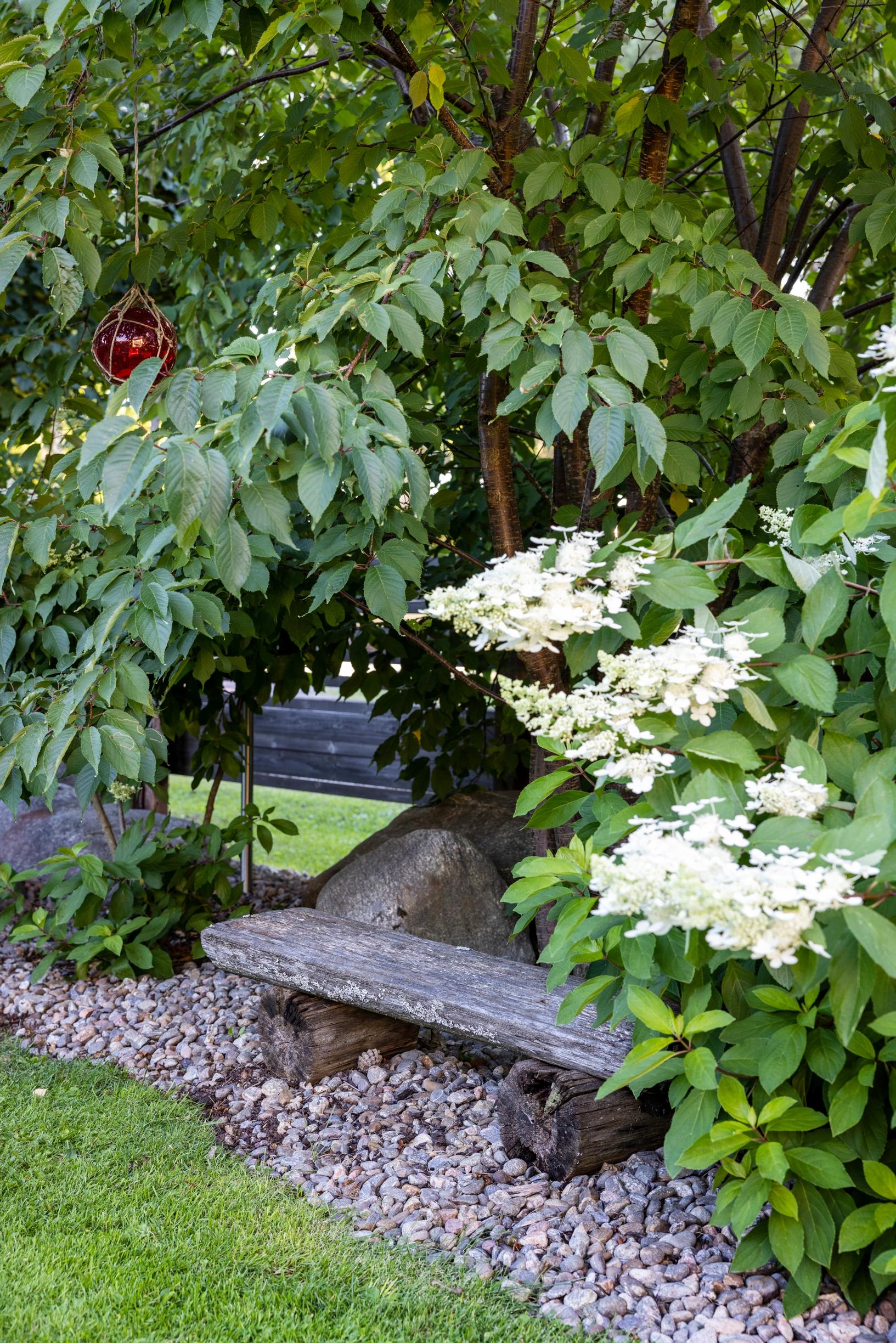

Mika’s tips for a carp pond
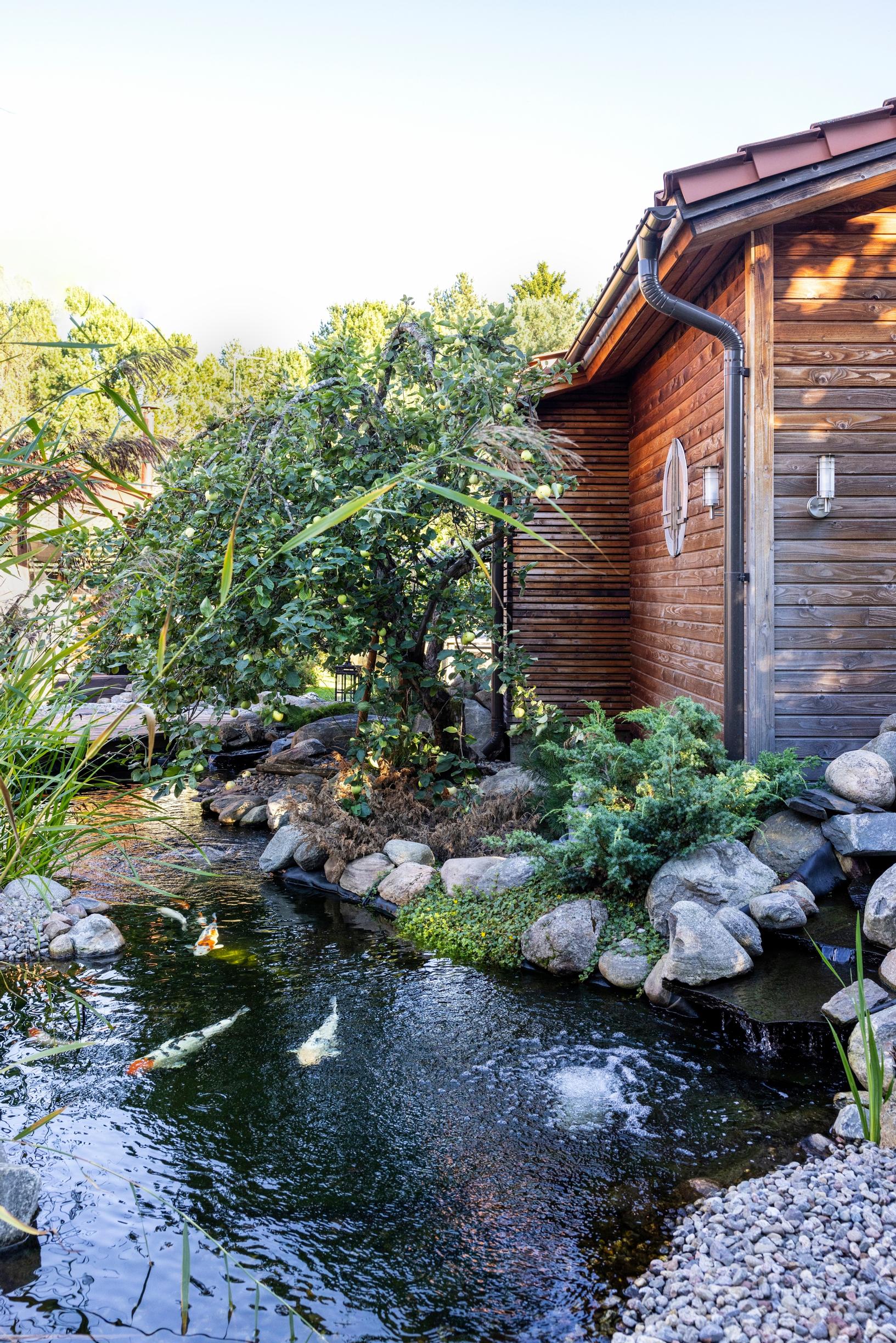
1. Allow plenty of space
Make sure the pond is large enough—at least 10 m³ (2,600 gallons)—because carp grow big.
2. Take care of the equipment
Ensure that the water has an oxygen level suitable for carp. You’ll need circulation and filtration pumps, an aerator, a filter, and a UV light. A pH of 7–8 is ideal. Avoid sudden large changes in their environment.
3. Get a shoal
Get at least seven fish, because carp are social schooling fish. Goldfish can live alongside them.
4. Feed daily
Give the carp both floating and sinking fish food every day, so timid individuals below the surface also get enough to eat.
See more photos on Mika’s Instagram @mnqualitykoi.


